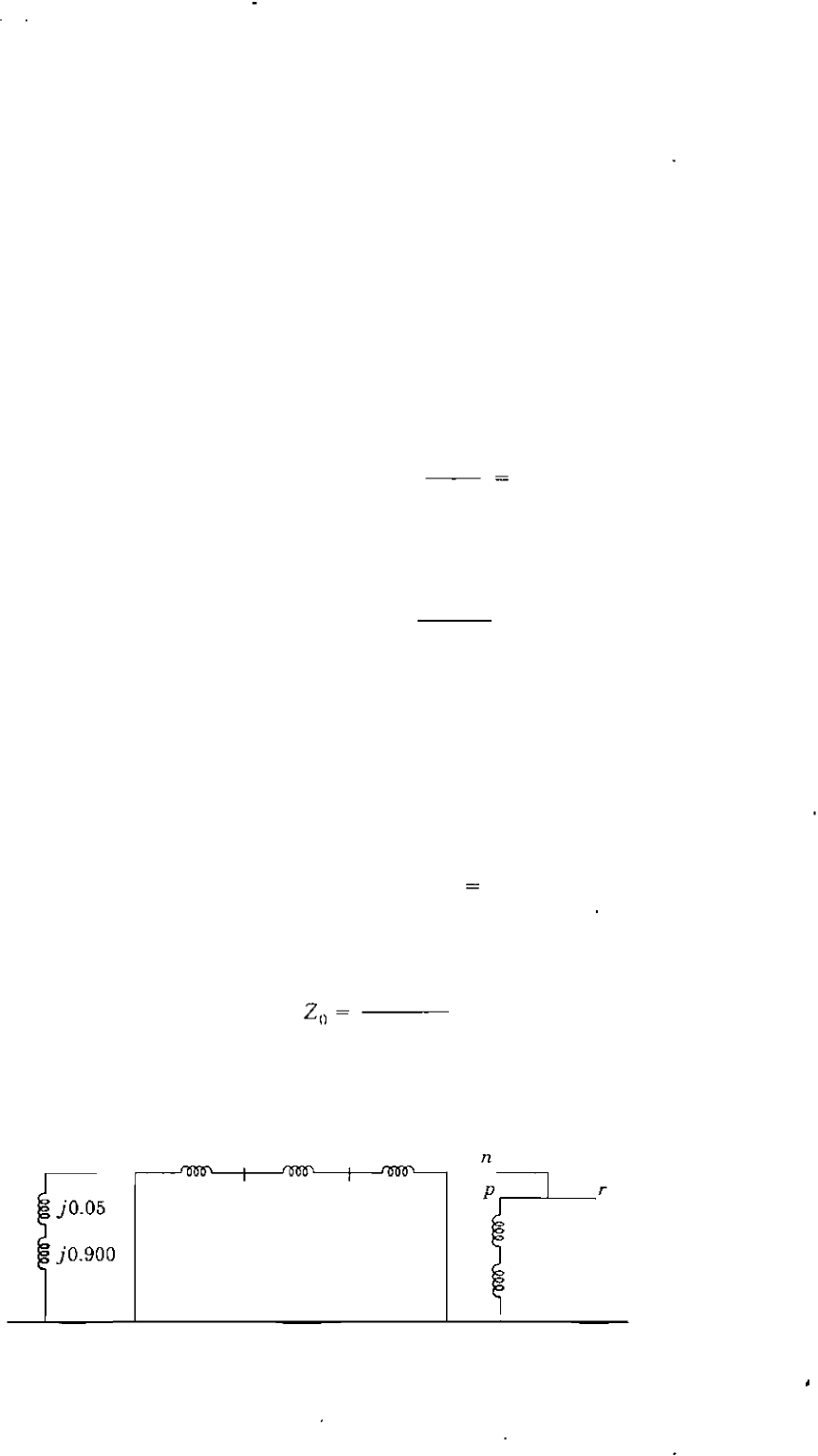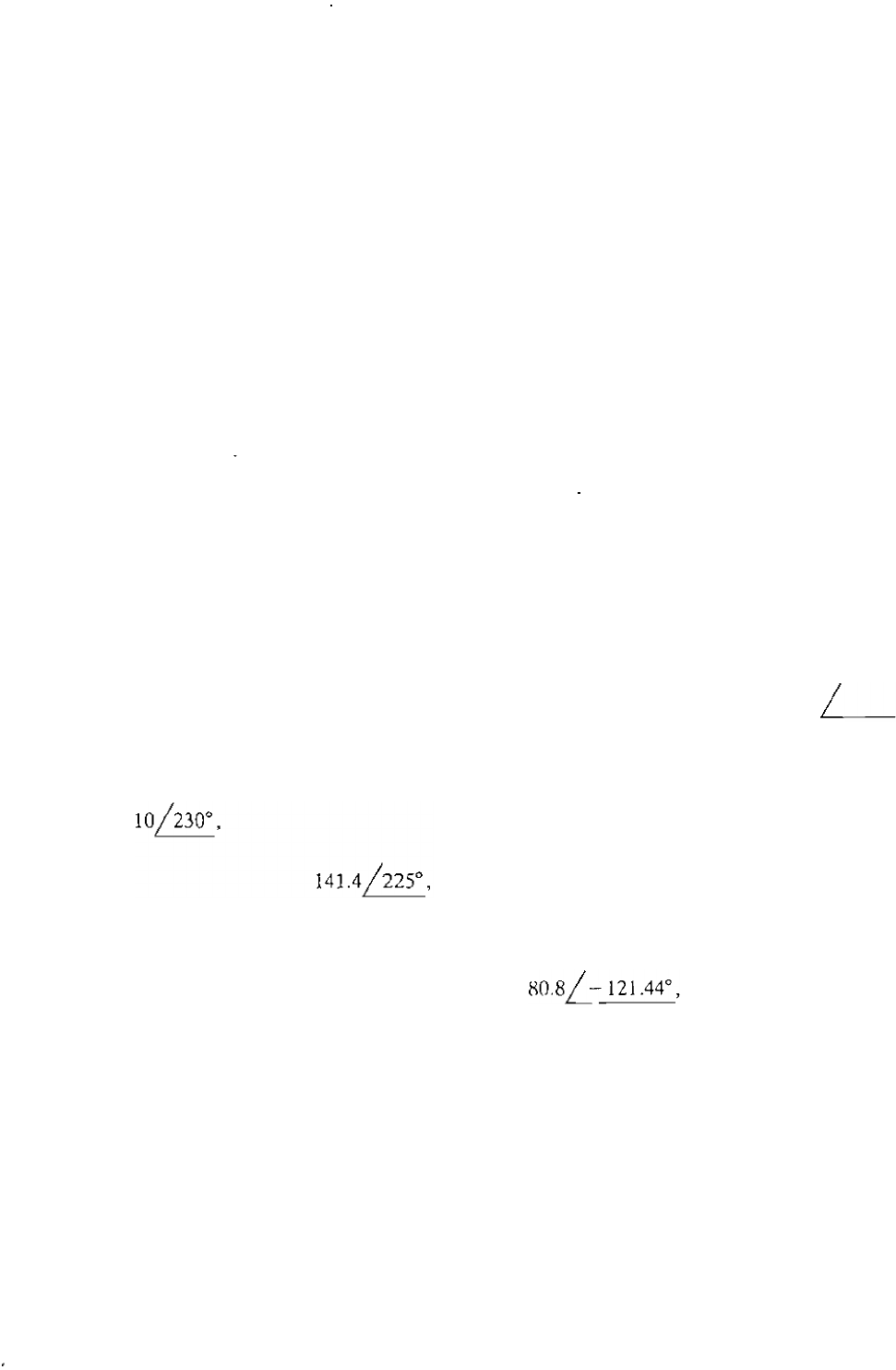Stevenson J. Power system analysis
Подождите немного. Документ загружается.


466
CHAPTER II SYMMETRICAL COMPONENTS AND SEQUENCE NEORKS
motors are
Generator:
Motor 1:
Motor 2:
In the generator circuit
and in the motor circuit
Xo = 0.05 per unit
( 300
) (
1 3.2
)
Xo = 0.05 -
8
= 0.0686 per unit
200
13.
( 300
) (
13.2
)
2
Xu = D.05 - 0.1372 per unit
100
13.8
(20)
2
Base Z =
300
Base Z =
(13
300
1.333 n
2
=
0.635 H
In the impedance network for the generator
(
0.4
)
3Z
n
= 3 = 0.900 per unit
1.333
and for the motor
3Z
= 3
(
0.4 )
n
0.635
For the transmission line
1.5 x
176.3
1.890 per unit
� 0.5445 per unit
The zero-sequence network is shown in Fig. 11.2�.
k
jO.0857 l jO.5445 m jO.0915
n
r
jO.06B6 r
jO.1372
)1.890
Reference
GU 11.28
Zero-sequence neork for Example 11.9.

PROBLEMS 467
11.11 SUMMY
Unbalanced voltages and currents can be resolved into their symmetrical
components. Problems are solved by treating each set of components separately
and superimposing the results.
In balanced networks having strictly symmetrical coupling between phases
the currents of one phase sequence induce voltage drops of like sequence only.
Impedances of circuit elements to currents of dierent sequences are not
necessarily equal.
A knowledge of the positive-sequence network is necessary for power-ow
studies, fault calculations, and stability studies. If the fault calculations or
stability studies involve unsymmetrical faults on otherwise symmetrical systems,
the negative- and zero-sequence networks are also needed. Synthesis of the
zero-sequence network requires particular care because the zero-sequence
network may dier from the others considerably.
PROBLEMS
11.1. If
Va
�) = 50&, V2) = 20�, and V})
=
10� V, determine analytically
the voltages to neutral Va n' Vb ", and
V
e
il
'
and also show graphically the sum of the
given
symmetrical components which determine the line-to-neutral voltages.
11.2. When a generator has terminal a open and the other two terminals are connected
to each othcr with a short circuit from this connection to ground, typical values
for the symmetrical components of current in phase a are 1�1) = 600
/
-90°,
I�
2
)
=
250 ., and I�
O
)
= 350 � A. Find the current into the ground and the
current in each phase of the generator.
11.3. Determine the symmetrical components of the three currents I a = 10&, Ib
=
10/2300,
and
Ie = 10� A.
11.4. The currents owing in the lines toward a balanced load connected in � are
10 = 100&, Ib = 141.4/2250,
and Ie = 100�. Find the symmetrical compo
nents of the given linc c
- 2008 — 2025 «СтудМед»
